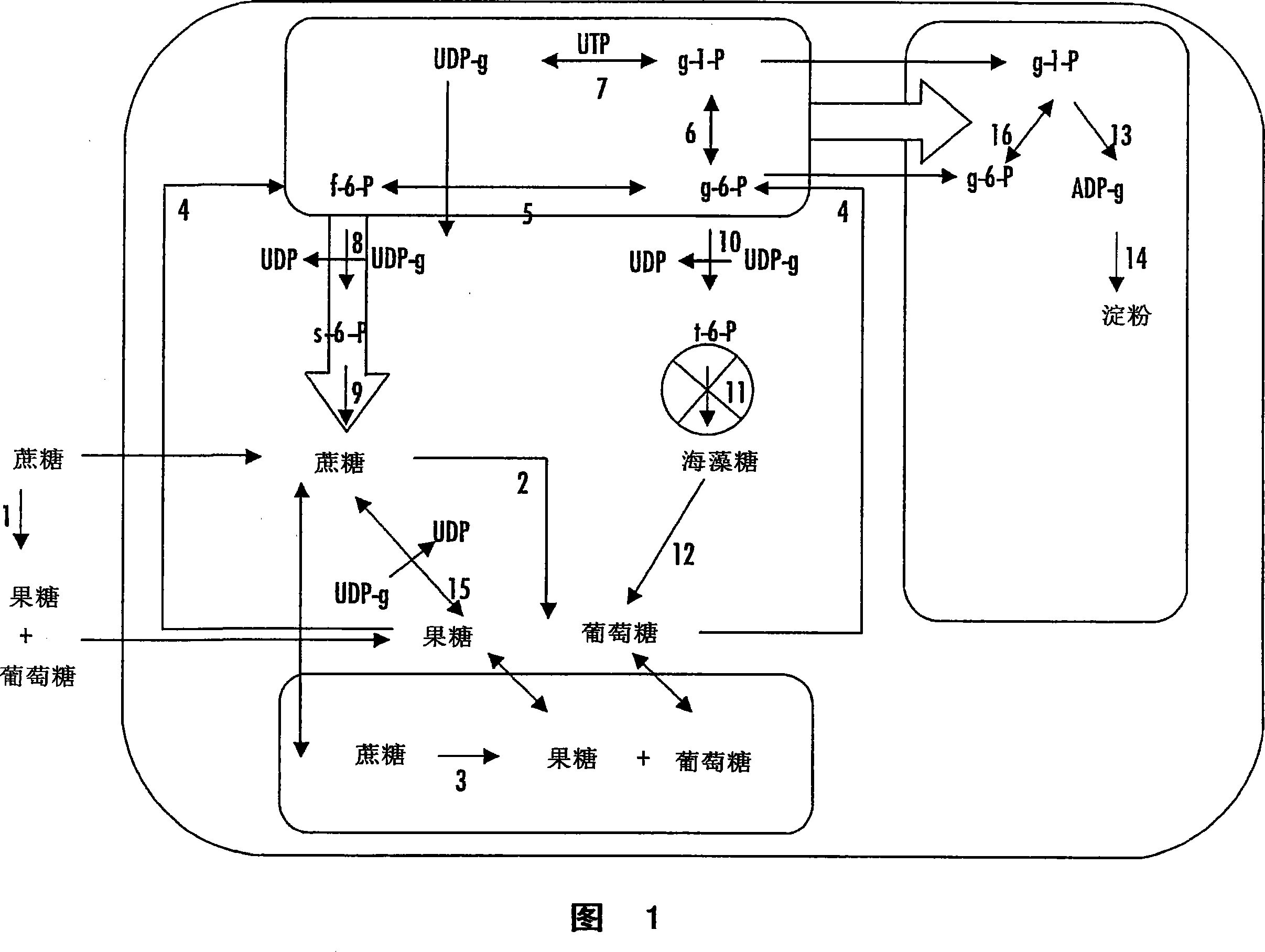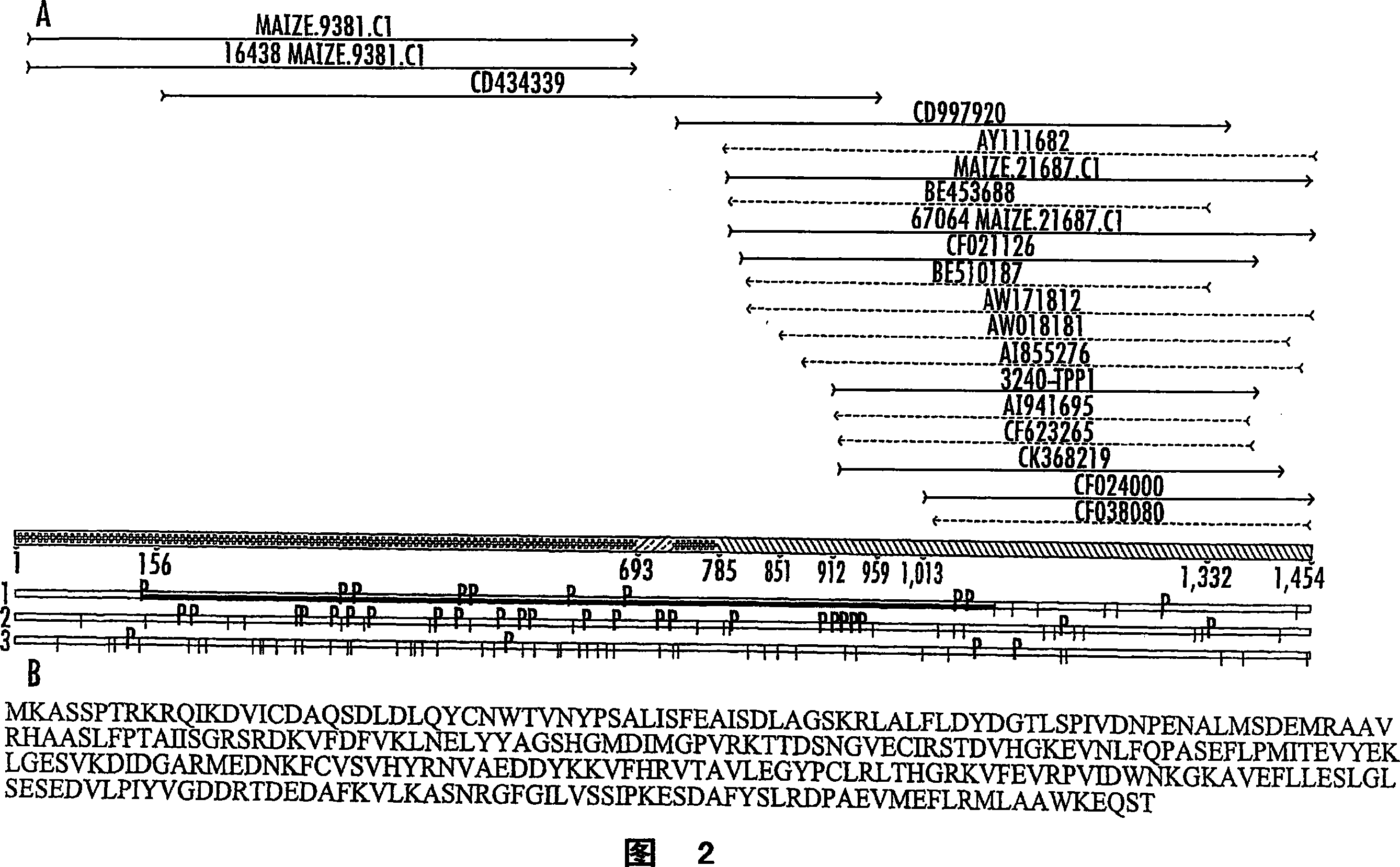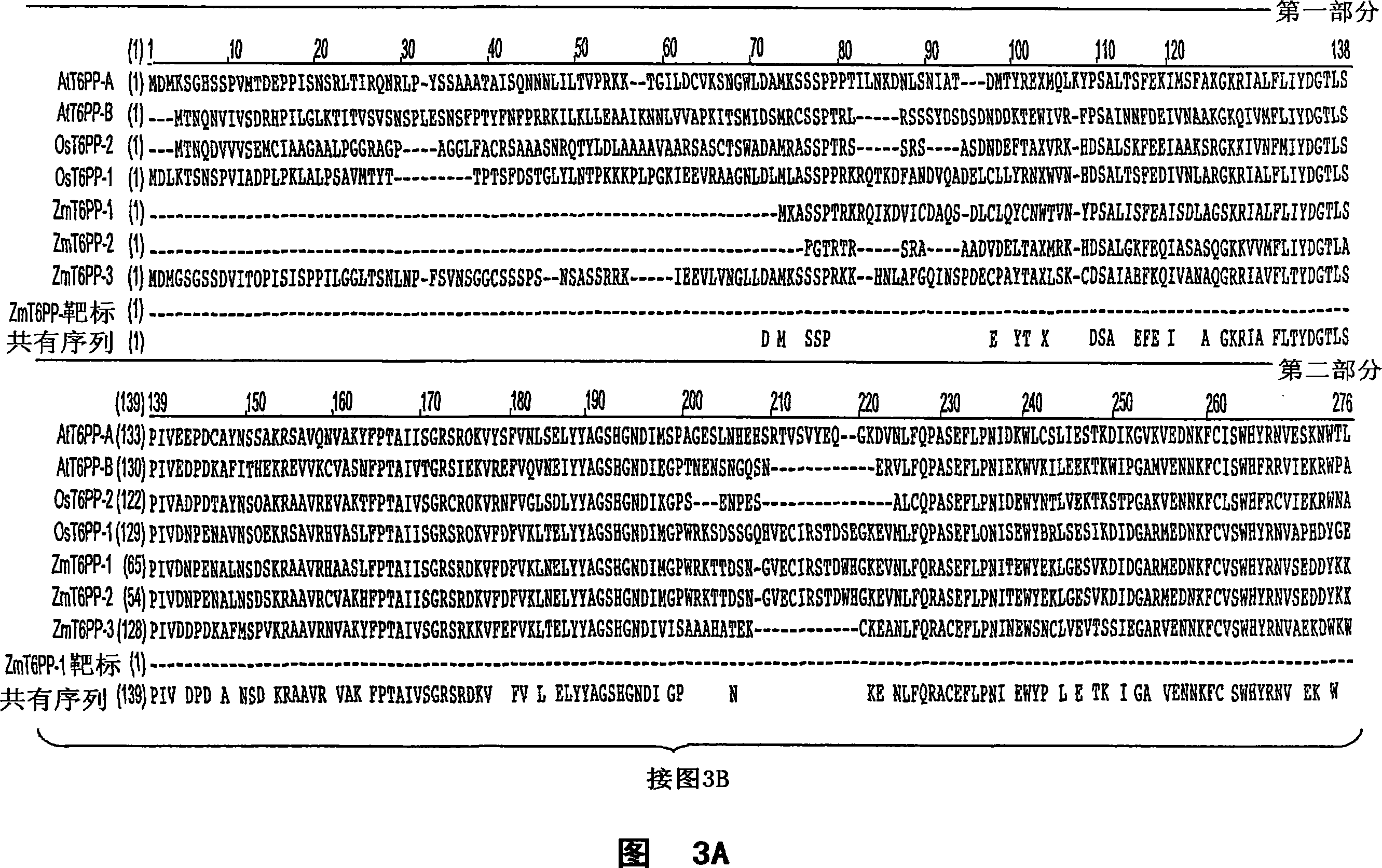Stress tolerance in plants through selective inhibition of trehalose-6-phosphate phosphatase
A technology for plants and plant cells, applied in plant products, botanical equipment and methods, angiosperms/flowering plants, etc., and can solve problems such as small improvements in drought tolerance
- Summary
- Abstract
- Description
- Claims
- Application Information
AI Technical Summary
Problems solved by technology
Method used
Image
Examples
Embodiment 1
[0067] Example 1: Identification and acquisition of ZmTPP1 gene
[0068] The first vascular plant trehalose-6-phosphate phosphatase gene was cloned from Arabidopsis thaliana by complementation of yeast tps2 deletion mutants (Vogel et al. 1998). At that time it was shown that the genes designated AtTPPA and AtTPPB (GenBank accessions AF007778 and AF007779) had trehalose-6-phosphate phosphatase activity. The AtTPPA and AtTTPB protein sequences were used for TBLASTN queries of maize and rice sequence databases. Sequence alignments group hits into individual genes. Figure 2A is a schematic diagram depicting the alignment defining ZmT6PP-1. Three maize T6PP homologues and two rice T6PP homologues were identified. The cDNA sequences corresponding to the predicted protein sequences of each gene - ZmT6PP-1, -2 and -3 and OsT6PP-1 and -2 - are shown in SEQ ID NO. 1, 2, 3, 4 and 5, respectively. Figure 3 shows the overall alignment of these T6PPs with Arabidopsis T6PPs. The relatio...
Embodiment 2
[0072] Embodiment 2: Construction of Rab17 expression cassette
[0073] An expression cassette based on the maize Rabl7 gene has been found to be drought-induced in vegetative tissues (Vilardell et al., 1990) and develops expression in maturing seeds (Vilardell et al., 1991). One embodiment of the present invention is to provide a nucleic acid construct comprising a drought-inducible promoter in vegetative tissue operably linked to a nucleic acid molecule, wherein when the nucleic acid molecule is in a plant cell When expressed, it reduces the expression of the endogenous T6PP gene in plant cells.
[0074] The present invention includes a nucleic acid construct having a promoter derived from the 5' region of Rab17 gene and exhibiting promoter activity in plants.
[0075] The present invention also includes a nucleic acid construct comprising the entire or partial sequence of the nucleic acid encoding T6PP-RNAi, wherein the Rab17 promoter drives the T6PP-RNAi expression casset...
Embodiment 3
[0087] Embodiment 3: Construction of T6PP-RNAi expression cassette
[0088] Figure 6 shows the primers used to generate the T6PP-RNAi gene. Two PCR fragments were generated from the pCR-4-TOPO-ZmT6PP-NS template (Figure 7). Fragment 1 (SEQ ID NO. 15) contains part of the CMVpSPORT6 vector as a loop in the T6PP-RNAi gene product. Fragment 1 was amplified from pCR-4-TOPO-ZmT6PP-1 using high-fidelity PCR in a 50 μL reaction mixture consisting of: 1 μL miniprep pCR-4-TOPO-ZmT6PP-NS DNA, 200 μM dNTPs, 20 μM oligonucleotides Nucleotide primer 001L (5'-ATAGGCGCGCCATGTTGGAGATGACAGAACAGATC-3') (SEQ ID NO.38), 20 μM oligonucleotide primer 002R (5'-ATACCGCGGGGACTGTCCTGCAGGTTTAAACG-3') (SEQ ID NO.39), 5 μL 10 × clone Pfu buffer and 2.5 units of Pfuturbo DNA polymerase (Stratagene, Cat. No. 600252) in a final volume of 50 μL. The thermal cycling program was at 95°C for 30 seconds, followed by 40 cycles (95°C for 10 seconds, 65°C for 60 seconds, 72°C for 2 minutes), followed by 72°C for ...
PUM
 Login to View More
Login to View More Abstract
Description
Claims
Application Information
 Login to View More
Login to View More - R&D
- Intellectual Property
- Life Sciences
- Materials
- Tech Scout
- Unparalleled Data Quality
- Higher Quality Content
- 60% Fewer Hallucinations
Browse by: Latest US Patents, China's latest patents, Technical Efficacy Thesaurus, Application Domain, Technology Topic, Popular Technical Reports.
© 2025 PatSnap. All rights reserved.Legal|Privacy policy|Modern Slavery Act Transparency Statement|Sitemap|About US| Contact US: help@patsnap.com



